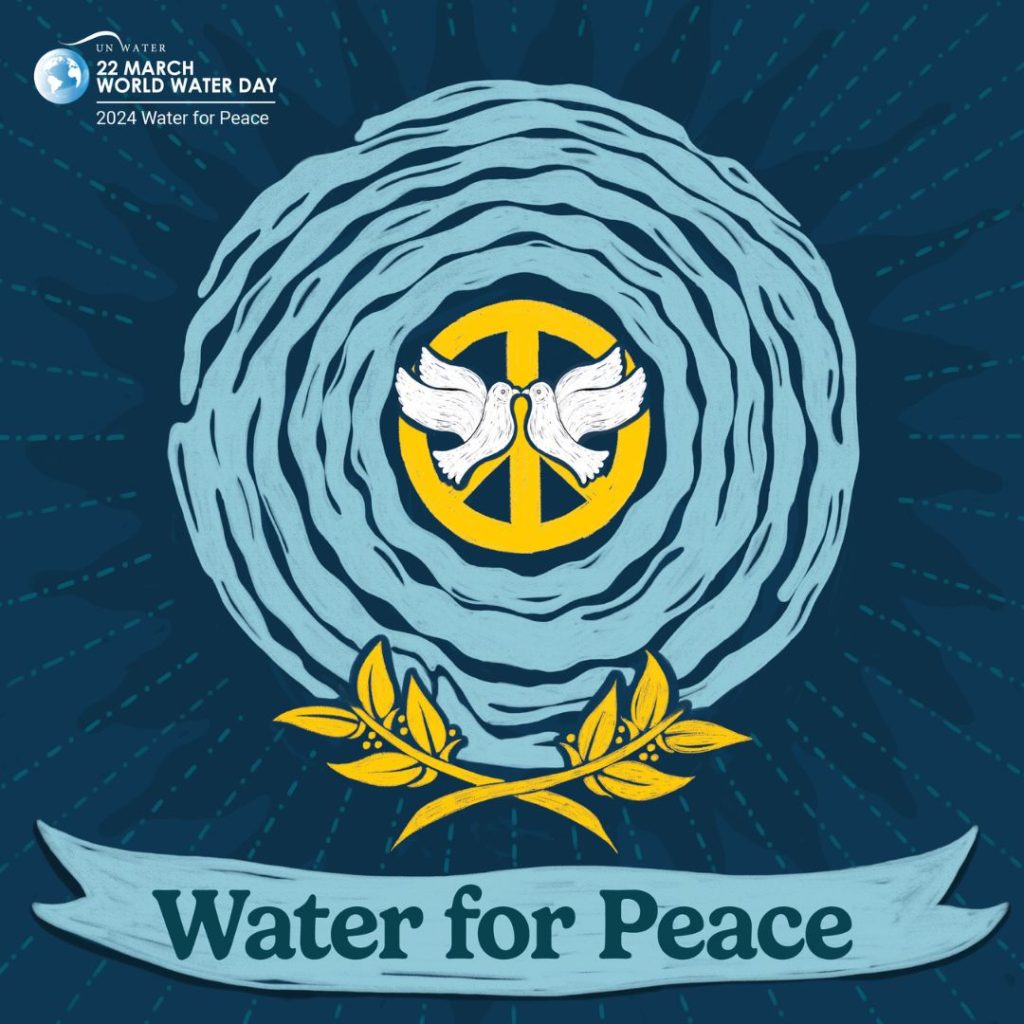World Water Day - Water management as a tool for peace and sustainable development

World Water Day will once again be celebrated on March 22, with the theme for 2024 being "Leveraging Water for Peace". This year, World Water Day aims to highlight the benefits of water management as a means to peace and to present effective mechanisms and tools to improve cooperation and avoid water-related disputes.
"The earth is getting warmer; sea levels are rising, rainfall patterns are changing and rivers are carrying less and less water. This is causing droughts in some regions and flooding and coastal erosion in others. At the same time, pollution and over-abstraction are threatening the availability and accessibility of clean freshwater on which all life depends. Dwindling water supplies can exacerbate competition and fuel tensions between people, communities and countries. This increases the risk of conflict.
The motto of this year's World Water Day is "Water for Peace". Much greater cooperation is needed to achieve this goal. Today, 153 countries share water resources. Only 24 of them report that they have cooperation agreements for all their shared water resources," explains Antonio Guterrez, UN Secretary-General on the occasion of this year's World Water Day.
The most important key facts at a glance
- Only 0.5% of the world's water is usable drinking water. Climate change is making this resource scarce. In the past 20 years, the global supply of drinking water has decreased by 1 cm/year, with massive consequences for our water security(WMO, 2021).
- 2.2 billion people still have no direct access to clean water, 115 million people have no access to drinking water at all and are dependent on rainwater and other surface water
- Around half of the world's population has faced water scarcity in recent years, at least for a certain period of time(IPCC, 2022). The number of people affected will increase to between 2.7 and 3.2 billion by 2050 due to the climate crisis and the growing global population (United Nations, 2020)
- 72% of available drinking water is used in agriculture(UN-Water, 2023). The climate crisis, population growth and growing water scarcity are increasing the pressure on food supplies(IPCC, 2014).
- Globally, more than 3 billion people rely on water that crosses national borders, representing 60% of all drinking water. This affects 153 countries - yet only 24 countries have reported cooperation agreements for all their shared water resources(UN-Water, 2023).
- Over the past 50 years, water-related disasters dominated the list of all natural disasters and were responsible for 70% of all deaths caused by disasters s (World Bank, 2022)
Water scarcity in Austria
We were used to there always being enough water here. But the last few years have taught us otherwise, especially in eastern Austria. According to a study by the Federal Environment Agency, the situation will become even worse in the future.
- By 2050, there will be up to 23 percent less groundwater in Austria due to the climate crisis. The eastern region will be particularly affected. However, groundwater is very important: all of our drinking water consists of groundwater and spring water and some of our fields are also irrigated with it.
- At the same time, we will consume up to 16 percent more groundwater in 2050 than we currently do.
- That is around 200 billion liters more per year. The reason for this is that it is getting hotter, the fields need more water and more water is needed as the population grows.
- However, scientific forecasts also predict a further increase in water demand for industry and commerce in Austria.
- Last summer, for example, not only did the Zicksee lake in Burgenland dry up completely, the drought also caused damage to agriculture amounting to 170 million euros.
Greenpeace is calling for a genuine five-point plan to combat water scarcity in Austria so that water shortages do not become an annual side effect of summer in future
- Transparency through water reporting register
- Contingency plans for regions particularly threatened by drought
- Set targets for reducing water consumption by 2030
- Support program against water waste
- Pricing of water withdrawal by industrial companies
Further demands for World Water Day
Limit values for PFAS in drinking water
GLOBAL 2000 calls for Austrian drinking water limits for perpetuation chemicals (PFAS) that ensure the protection of human health. At the end of 2020, the EU Commission had already set limits in the revised EU Drinking Water Directive defined new limit values for persistent chemicals in drinking water. Unfortunately, when setting these EU limits, the current risk assessment of the European Food Safety Authority EFSA (also from 2020) of four widespread PFAS was not taken into account when setting these EU limits.
The result is EU limits that allow PFAS levels in drinking water that exceed the "tolerable weekly intake" of 4.4 nanograms per kilogram of body weight set by the EFSA many times over.
Defuse RED III
The Austrian Environmental Umbrella Association is calling for the Renewable Energy Directive (RED III), which was passed at the end of last year, to be toned down at a national level in order to protect domestic waters. This is because the revised directive is intended to further accelerate approval procedures for the expansion of renewables - e.g. by eliminating environmental and nature impact assessments in so-called acceleration areas. " In Austria, only 14% of rivers are still ecologically intact and there are hardly any longer free-flowing stretches left. As a result of the new directive, we see the great danger of no longer being able to take legal action against the construction of power plants even in the last free flowing waters, which would have fatal consequences for biodiversity," says Franz Maier, President of the Environmental Umbrella Association.
Left:






